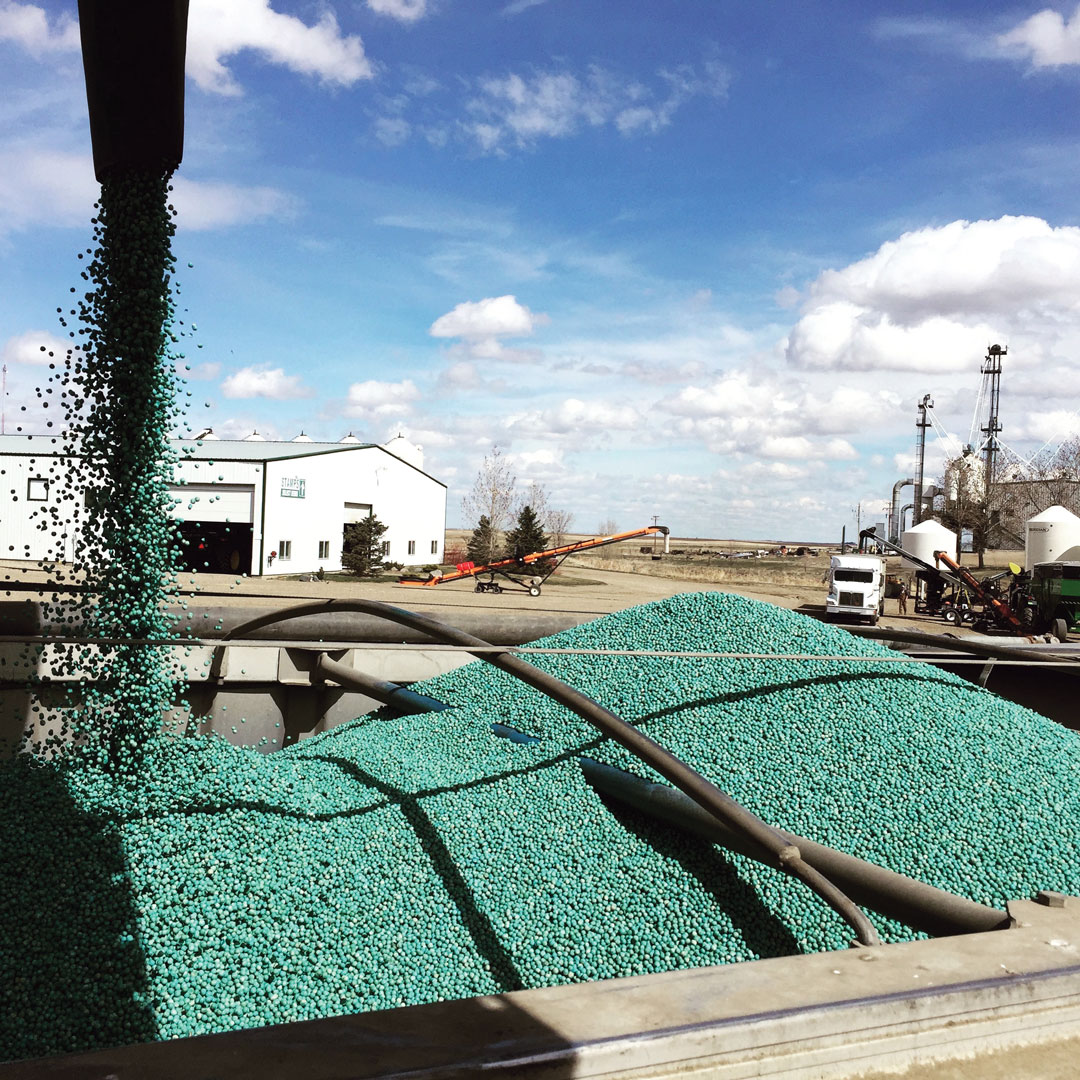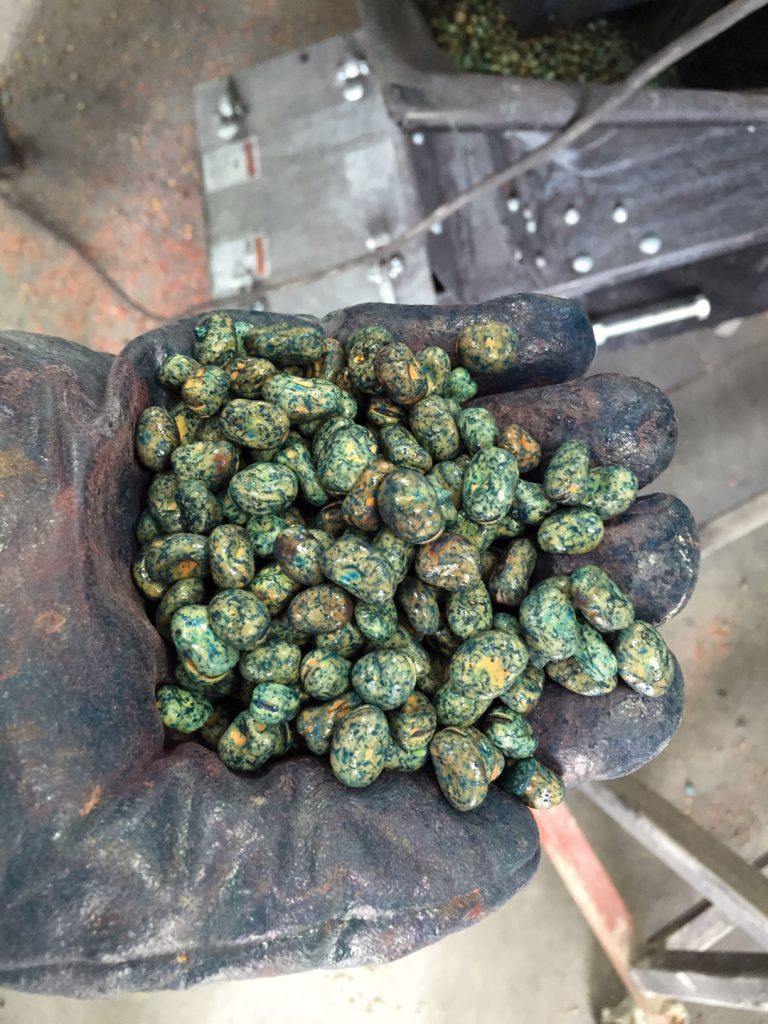PESTICIDE REVIEW CAUSES CONCERN FOR FARMERS
POTENTIAL LOSS OF INSECTICIDE GROUP MAY CAUSE INCREASE IN FOLIAR SPRAYING
BY LEE HART
Southern Alberta farmer Greg Stamp is concerned he may be losing a very effective component of his crop protection toolbox.
There’s a strong chance a Health Canada review of seed treatments containing the active ingredient imidacloprid could halt the use of these effective products. As well, the review could snowball to include the whole neonicotinoid chemical group. Stamp, who with family members operates Stamp Seeds in Enchant, north of Lethbridge, fears the loss of imidacloprid could increase his crop protection costs, and ultimately increase environmental risk.
The Health Canada review cites studies showing products within this group pose a risk to beneficial insects and water quality. There’s a strong leaning to phase them out over the next three to five years.
In a submission to Health Canada’s Pest Management Regulatory Agency (PMRA), Alberta Barley questioned the process and approach taken, saying the agency failed to engage with the ag industry prior to announcing the review and has lacked transparency and predictability.
Alberta Barley also questioned the agency’s interpretation of the scientific data, contending the small number of water monitoring sites in Ontario and Quebec with excessive pesticide levels don’t warrant nation-wide regulatory action. Additionally, Alberta Barley said the threshold risk for aquatic vertebrates cited is not based on data from existing real-world studies, but rather on highly conservative laboratory data.
Health Canada will post its proposed decision by December 2017, allow for a period of further review and then make its final decision in the spring of 2018.
MORE COST, HIGHER RISK
Stamp said the loss of one and potentially all neonicotinoid products will significantly impact crop protection costs.
“If we are unable to use that seed treatment, we would have to apply one or two and perhaps three in-crop treatments with an insecticide,” he said. “It increases costs: the foliar applications aren’t as effective, so perhaps more than one is needed.” He said even though he and other producers are careful about how they apply insecticide sprays, multiple applications may increase the environmental impact.
“My greater concern is if they decide to withdraw imidacloprid from the market, what’s to stop them from removing all the neonicotinoids?” said Stamp. “That would be a difficult situation. These seed treatments are the best tools to control these pests early while they’re in the ground. Not having them available would mean an increase in foliar insecticide treatments.”
On his own farm, Stamp, as well as many of his customers who produce pulse crops such as peas and faba beans, rely on the imidacloprid seed treatment product Stress Shield to control pea leaf weevil. CruiserMaxx is also effective, but without Stress Shield or CruiserMaxx, they’d have to spray crops up to three times.
“We not only need the products we have, we could use more effective ones,” said Stamp. “The neonicotinoids are very effective on some pests, but on others, such as wireworm, they don’t really control, they just slow them down.”
Imidacloprid has been cited as Health Canada’s main concern, although studies show other neonicotinoids—clothianidin and thiamethoxam—have been detected in aquatic environments, so they are under review as well. The department appears to be equally concerned with pesticide impacts on pollinators and aquatic insects.
PUTTING A NAME TO A MOLECULE
Within the neonicotinoid group there are seven active ingredients, three of which are most commonly used in field-crop insecticides. The active ingredient imidacloprid is used in brand-name products such as Gaucho, Raxil Pro Shield, Sombrero, Stress Shield and Admire. Clothianidin is used in products such as Prosper, Poncho, Titan and Clutch. Thirdly, thiamethoxam is used in Helix, Cruiser and Actara.
TWO LEVELS OF CONCERN
Manitoba Agriculture entomologist John Gavloski said the prospect of having insecticides withdrawn from the market involves two levels of concern. “Products containing imidacloprid are one thing,” said Gavloski. “But if we’re talking about all neonicotinoids being withdrawn, that’s really a whole different ball game.”
“Western Canadian grain and oilseed growers generally don’t use a lot of the imidacloprid products,” said Gavloski. “So losing that one active ingredient wouldn’t be a major setback. They would have other neonicotinoid options. But if all of the neonicotinoid products are withdrawn, there would be much fewer options.”
One newer chemical group that could be used as an alternative seed treatment in controlling some crop pests is the diamide group, which uses different active ingredients than the neonicotinoids. Trade name products most effective for field crops include Lumiderm and Fortenza.
Gavloski said the beauty of the
neonicotinoid products is that they are very water soluble and act very quickly. “That might also have been their downfall,” he said. “Because they are so water soluble, they can move easily into groundwater.” The diamide products are effective in controlling flea beetles, cutworms and other pests, but they do not have the same rapidity. “They are slower acting but last longer,” he said. Some seed treatments include both chemical groups—a neonicotinoid for early fast action and a diamide for prolonged activity.
THE OPTIONS
Gavloski said he believes the studies he has seen are based on good science and show that neonicotinoid chemistries are showing up in groundwater. “That is a concern that needs to be addressed,” he said. “It is not sustainable the way it is, but what is the solution? Can we have more targeted rather than widespread use in some crops, or do they need to be phased out?”
Gavloski said that in some parts of the country—primarily corn- and soybean-growing areas—the neonicotinoids aren’t used solely for pest control. They are also marketed as growth promotants, which has led to their widespread use. “It might help if they changed the marketing focus and the products were only used as needed to control pests,” he said.
Stamp is also not sure there’s an easy solution. “I know many farmers, like ourselves, only use these products as seed treatments where needed,” he said. “With this crop on that field, I know I have a pest problem so I use the insecticide-treated seed. But then I don’t use insecticide-
treated seed on the next field where it is not needed. If we are already doing that, it makes it difficult to reduce use.”
He suggested that if insecticide dust particles are harmful to beneficial insects, perhaps a coating or other treatment could be applied to reduce this release.
Stamp said commodity associations he is involved with are working diligently with Health Canada and the Pest Management Regulatory Agency to create a solution that will keep these chemistries in the toolbox. As well, Alberta Pulse Growers is working on studies relating to the review.
“Any decision that is made has to be based on good science and not be a political gesture,” said Stamp. “Let’s work with the science. As farmers, we are committed to protecting the environment, but if we lose these products and have no option other than to use multiple applications of pesticides, that may not be a solution either.”








Comments